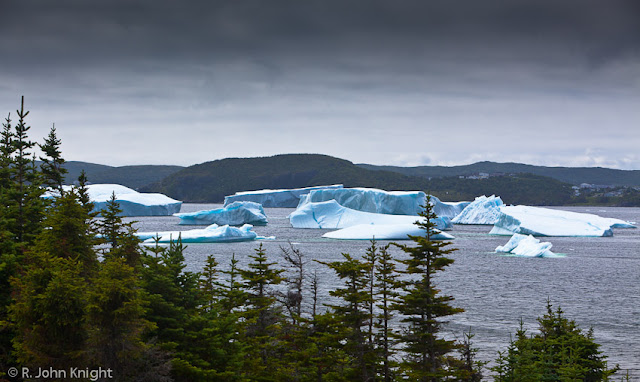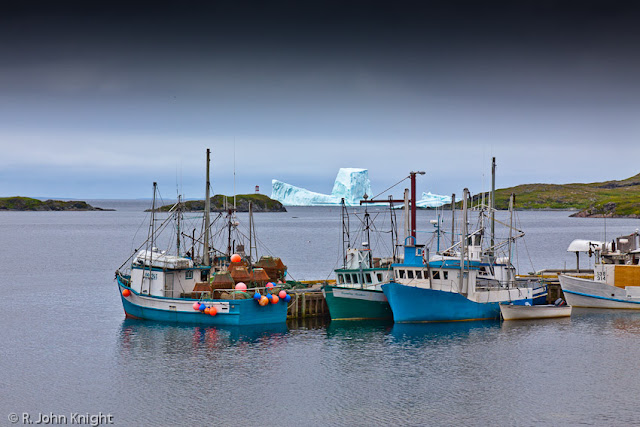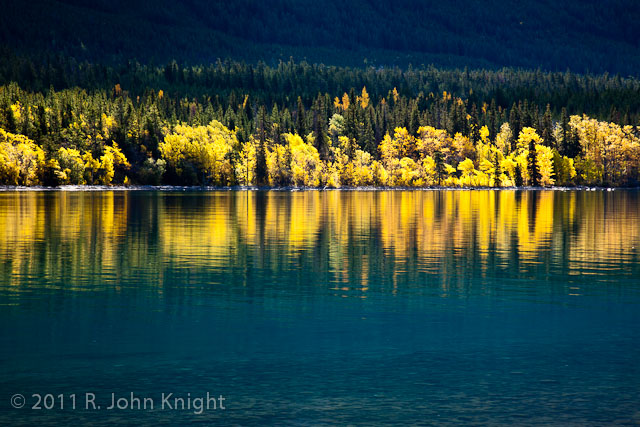 |
| On the prowl |
 |
| Summer cabins, Matthews Cove (NL) |
And so with our new friends, John and Robin, who were from Goose Bay and whom we met at Battle Harbour, we were taken in a small boat around to an old stage in Matthews Cove. From there, we walked uphill a short distance until we could see the remains of the old school. We waited and watched from a distance for a short time, but saw no activity. With a light, but steady, rain falling from grey skies, and not knowing where the best place was to set up, we decided to explore around some of the old abandoned houses in Trap Cove.
 |
| Abandoned home, Trap Cove (NL) |
Periodically, we'd carefully peak over the small intervening hill to see if there was any activity at the school. Eventually, one fox made a cautious appearance, and then, another. We slowly and quietly crept back and set up our tripods about 10-15 m from the school.
The foxes were initially unsettled, particularly with the four of us nearby. We sat quietly and waited. Eventually four foxes appeared, one at a time. Instead of the beautiful thick white winter coats that we had seen at Churchill (MB) during November a few years ago, these foxes had scruffy brown to grey to off-white coloured fur. These were Arctic Foxes in their summer duds. The seasonal variation in colour allows the foxes to blend into the rocks or vegetation during the summer, both for protection and hunting, just as their winter-white's made them almost invisible in snowy terrains.
 |
| Visitors at collapsed old school, Matthews Cove and Trap Cove |
The collapsed framework of the old school with its multiple entrances (exits) was a convenient and easy alternative to living in a burrow in the ground or snow.
Foxes are carnivores and scavengers, and typically feed on rodents (mice, lemmings), small birds, fish and vegetables. Such food was readily available from the nearby abandoned homes, stages and stores, summer cabins and locals.
Arctic Foxes typically range in weight from 3 - 9 kg, and from 75-115 cm long. Their bushy tail is about a third of the their overall length.
Foxes are carnivores and scavengers, and typically feed on rodents (mice, lemmings), small birds, fish and vegetables. Such food was readily available from the nearby abandoned homes, stages and stores, summer cabins and locals.
Arctic Foxes typically range in weight from 3 - 9 kg, and from 75-115 cm long. Their bushy tail is about a third of the their overall length.
Locals indicated that they had seen as many as 9 foxes at the old school. Arctic Foxes can have litters with up to 14 pups each spring (late May to early June). During our brief stay at the school in early August, we saw only four foxes. Where the other five foxes were was a mystery. To our inexperienced eye, we could not differentiate the parents from the pups.
With just the two of us nearby, the foxes quickly figured out that we were not a threat, so they just ignored us. They groomed themselves, played with each other, found things to chew on, dozed, and hunted, either nearby or on the remains of the old school. At times, they came closer than our cameras could focus.
We saw them chewing vigorously on sharp scraps plastic and other debris from the school. It left us thinking that such items would not be good for them if swallowed.
 |
| Lookout ... behind you! |
 |
| One way to get some iron in your diet |
We could only stay for about 3 hours before having to head across the spongy tundra of Great Caribou Island in the rain, and back to Battle Harbour. We enjoyed the rare opportunity to be this close to Arctic Foxes.
 |
| Play-time! |
Battle Harbour, Matthews Cove and Trap Cove are communities that were resettled by the Provincial Government in the early 1960's. Some of the old buildings are used for summer cabins in Matthews Cove and Trap Cove. Many of the buildings at Battle Harbour have or are being renovated under the guidance and support the Battle Harbour Historic Trust Inc. to recreate a living outport.









































